- Joined
- Nov 28, 2016
- Messages
- 2,351
Last week I picked up a large-ish Wilton bullet vise...
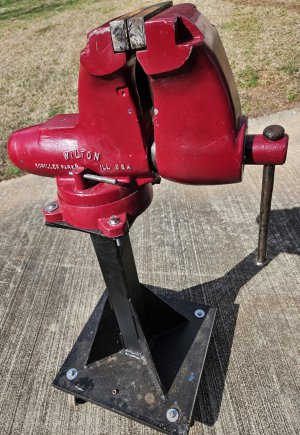
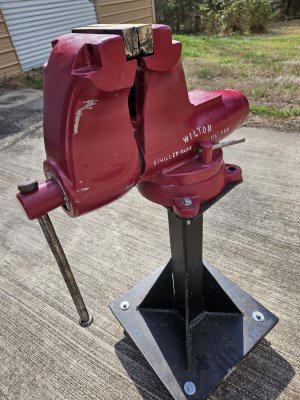
This vise is an early (1979) C3 model, judging from the measurements... but all of the specs that I have found say the C3 should weigh in at about 200 pounds. According to my old set of bathroom scales, it actually weighs about 158...
I know my scales probably aren't terribly accurate, but if they are reading 40 pounds lighter than actual weight, it's definately time for me to start dieting...
So I started overthinking things, as I tend to do occasionally, and started wondering if there were some chunks broke out of the vise and replaced with filler under that paint. I doubted it... 40 pounds of missing iron should be obvious.
This afternoon, I disassembled the vise and used a flashlight to inspect the insides of the casting cavities. I also checked the outside with a magnet... I found no evidence of damage, repairs, or filler at all.
I can't explain the weight discrepancy... but I'm not too worried about it now that I know the castings are sound.
While I had it apart, I repaired a couple of small issues. The front plate that holds the screw in the dynamic jaw has three screws that hold it to the jaw... the top screw was missing and there were no threads visible in the hole. I assumed the hole was stripped, but after running a #21 drill bit and a #10-32 tap through it, I determined the threads were just full of paint... they cleaned up nicely.
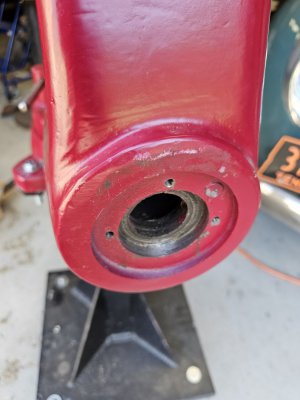
I put it back together with a new screw in the upper hole... it doesn't match the other two, but it will work until I can get one that does...
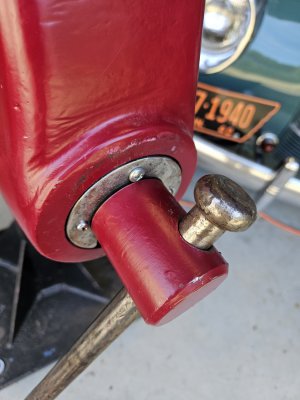
While I was working on it, I got a notification on my phone that USPS had delivered a package... I had ordered a new set of jaw inserts... they were in the mailbox.
The previous owner had removed the beat-up original inserts and flipped them upside down to try and make it look better... I removed them... they were in bad shape...
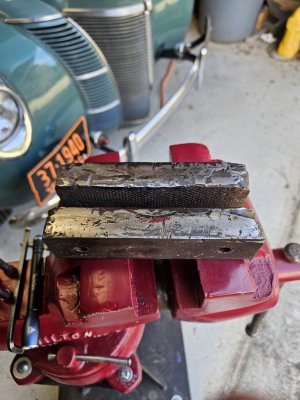
The new inserts are some that I bought off ebay... I don't know if they are original Wilton jaws or if the seller is making them.. they are pretty nice, anyway...
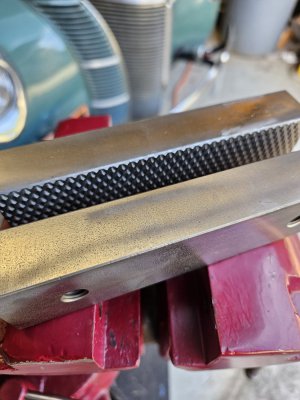
After installing them...
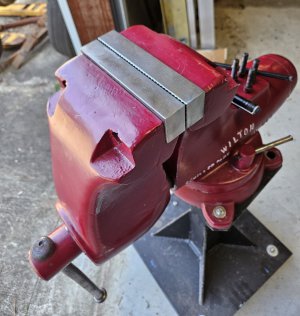
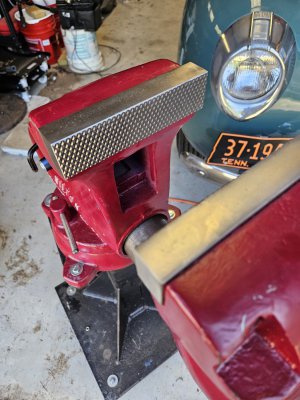
-Bear


This vise is an early (1979) C3 model, judging from the measurements... but all of the specs that I have found say the C3 should weigh in at about 200 pounds. According to my old set of bathroom scales, it actually weighs about 158...
I know my scales probably aren't terribly accurate, but if they are reading 40 pounds lighter than actual weight, it's definately time for me to start dieting...
So I started overthinking things, as I tend to do occasionally, and started wondering if there were some chunks broke out of the vise and replaced with filler under that paint. I doubted it... 40 pounds of missing iron should be obvious.
This afternoon, I disassembled the vise and used a flashlight to inspect the insides of the casting cavities. I also checked the outside with a magnet... I found no evidence of damage, repairs, or filler at all.
I can't explain the weight discrepancy... but I'm not too worried about it now that I know the castings are sound.
While I had it apart, I repaired a couple of small issues. The front plate that holds the screw in the dynamic jaw has three screws that hold it to the jaw... the top screw was missing and there were no threads visible in the hole. I assumed the hole was stripped, but after running a #21 drill bit and a #10-32 tap through it, I determined the threads were just full of paint... they cleaned up nicely.

I put it back together with a new screw in the upper hole... it doesn't match the other two, but it will work until I can get one that does...

While I was working on it, I got a notification on my phone that USPS had delivered a package... I had ordered a new set of jaw inserts... they were in the mailbox.
The previous owner had removed the beat-up original inserts and flipped them upside down to try and make it look better... I removed them... they were in bad shape...

The new inserts are some that I bought off ebay... I don't know if they are original Wilton jaws or if the seller is making them.. they are pretty nice, anyway...

After installing them...


-Bear
Last edited:

